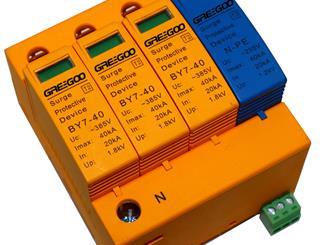
Socket Solid State Relay and Solid State Relay with Integrated Heatsink, what's the difference between feature and application
DIN rail mounted Socket Solid State Relay and Solid State Relay with Integrated Heatsink
Read More
GVC/EVC Series Low Voltage Medium Voltage Vacuum Starter Contactor: Advanced Solutions for Reliable Motor Control in Various Industries
The GVC type is suitable for AC systems with a frequency of 50Hz or 60Hz, a rated voltage of 1140V, 1.5KV, 2KV, 3.6KV and a rated current ranging from 63A to 3200A. The EVC type is suitable for AC systems with a frequency of 50Hz or 60Hz, a rated voltage of 7.2KV, 12KV, 24KV, 36KV, 40.5KV and a rated current ranging from 250A to 800A.
Read More
Advanced Low-Power Short-Range Millimeter-Wave Radar Module: Features and Applications
Low Power Short Range Millimeter-Wave Radar Module, the Preferred Choice for Smart Security and Smart Door Lock.
Read More
High frequency dc solid state relay, the application and features you may know.
10-1000Hz, 2400VDC, switching time is less than 0.25ms, mainly used for industrial control of DC high-voltage, high-current, high-power switching electrical equipment.
Read More
Sintering process in the chip of solid-state relays is of significant importance.
The use of sintering process in the chip of solid-state relays is of significant importance, primarily for the following reasons
Read More
How solid state relays work? Testing SSR with multimeter and wiring.
How solid state relays work? Hoto to Test a solid state relay with multimeter? How to connect a SSR relay from PLC to heater? You will get an answer.
Read More
How to choose a suitable Solid State Relays
Single phase or three phase, nominal voltage and current, potential surge or inrush current, AC or DC load, control signal, zero crossing type or random control ssr etc.
Read More
𝑪𝒐𝒏𝒔𝒊𝒅𝒆𝒓𝒂𝒕𝒊𝒐𝒏𝒔 𝒇𝒐𝒓 𝑺𝒐𝒍𝒊𝒅 𝑺𝒕𝒂𝒕𝒆 𝑹𝒆𝒍𝒂𝒚𝒔 𝑺𝒆𝒍𝒆𝒄𝒕𝒊𝒐𝒏
For resistive loads, a 2-3 times higher load current can be selected. For inductive or capacitive loads, a 3-4 times higher load current can be selected.
Read More
What's the difference between phase control Thyristor Module and Rectifier Diode Module?
Thyristor modules are used for controlled switching and power regulation, while rectifier diode modules are employed for converting AC to DC in rectification applications.
Read More
What are the main differences between MOVs and Spark Gaps in SPDs?
An effective surge protection strategy often combines the use of both MOVs and spark gaps, along with other protective devices, to provide comprehensive protection against different levels of power surges.
Read More
What is the main differences between Type 1 and Type 2 SPD?
It's worth noting that a comprehensive surge protection strategy may involve using both Type 1 and Type 2 SPDs in combination, along with other protective measures, to ensure maximum protection for electrical systems and connected devices.
Read More
What is the main difference between 8/20μs and 10/350μs in SPD?
8/20μs: Suitable for protection against fast-rising and short-duration surges, such as lightning strikes and rapid switching events.10/350μs: Suitable for protection against slower-rising and longer-duration surges, often associated with power distribution network switching operations and industrial electrical systems.
Read More













